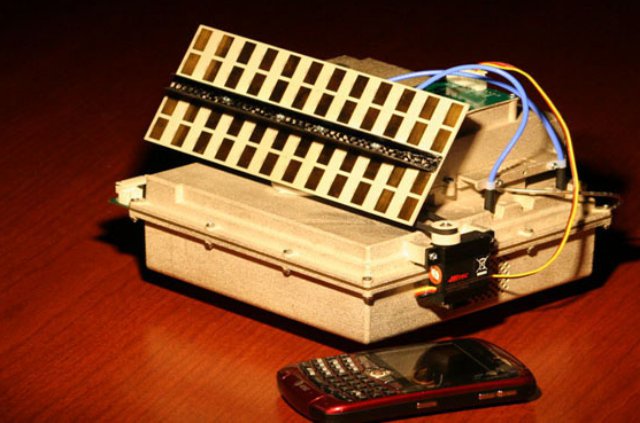 The developer of a synthetic aperture radar (SAR) that is orders of magnitude smaller than other radars was awarded a $24 million contract from the U.S. Army Contracting Command in Natick, Mass., to build a “lightweight, ultra-wideband” SAR for unmanned aircraft systems for completion in 2017.
The developer of a synthetic aperture radar (SAR) that is orders of magnitude smaller than other radars was awarded a $24 million contract from the U.S. Army Contracting Command in Natick, Mass., to build a “lightweight, ultra-wideband” SAR for unmanned aircraft systems for completion in 2017.
The Department of Defense announced the contract award on May 29 to ImSAR, of Salem, Utah, the only bidder. ImSAR CEO Ryan Smith told AIN that the contracted system will be an “adaptation” of technology used in the company’s current NanoSAR B and Leonardo low-power, high-resolution radar systems. He declined to discuss the radar specifications and host platform.
The X-band NanoSAR B radar assembly, including gimbal, GPS and inertial measurement unit, weighs just 3.5 pounds and operates at 30 watts of power. It has a standoff range of one to four kilometers (0.6 to 2.5 miles). Leonardo is a Ku-band radar that weighs only slightly more, with an operational height of up to 6,000 feet above ground level. The company lists resolutions for both radars down to 0.3 meters (one foot).
ImSAR’s first product was the NanoSAR A, a two-pound SAR released in 2009 and since discontinued. In comparison, the General Atomics Lynx AN/APY-8 Block 20 and AN/DPY-1 Block 30 multi-mode SAR and ground moving target indicator radars weigh 120 and 85 pounds, respectively. Lynx radars are used on the Army’s MQ-1C Grey Eagle, U.S. and UK Royal Air Force MQ-9 Reapers and U.S. Department of Homeland Security Predator Bs.
The shoebox-size NanoSAR radar has been demonstrated on the Insitu ScanEagle, Northrop Grumman Bat, Arcturus T-16 and other manned and unmanned platforms, according to ImSAR.
Source: AIN Online
